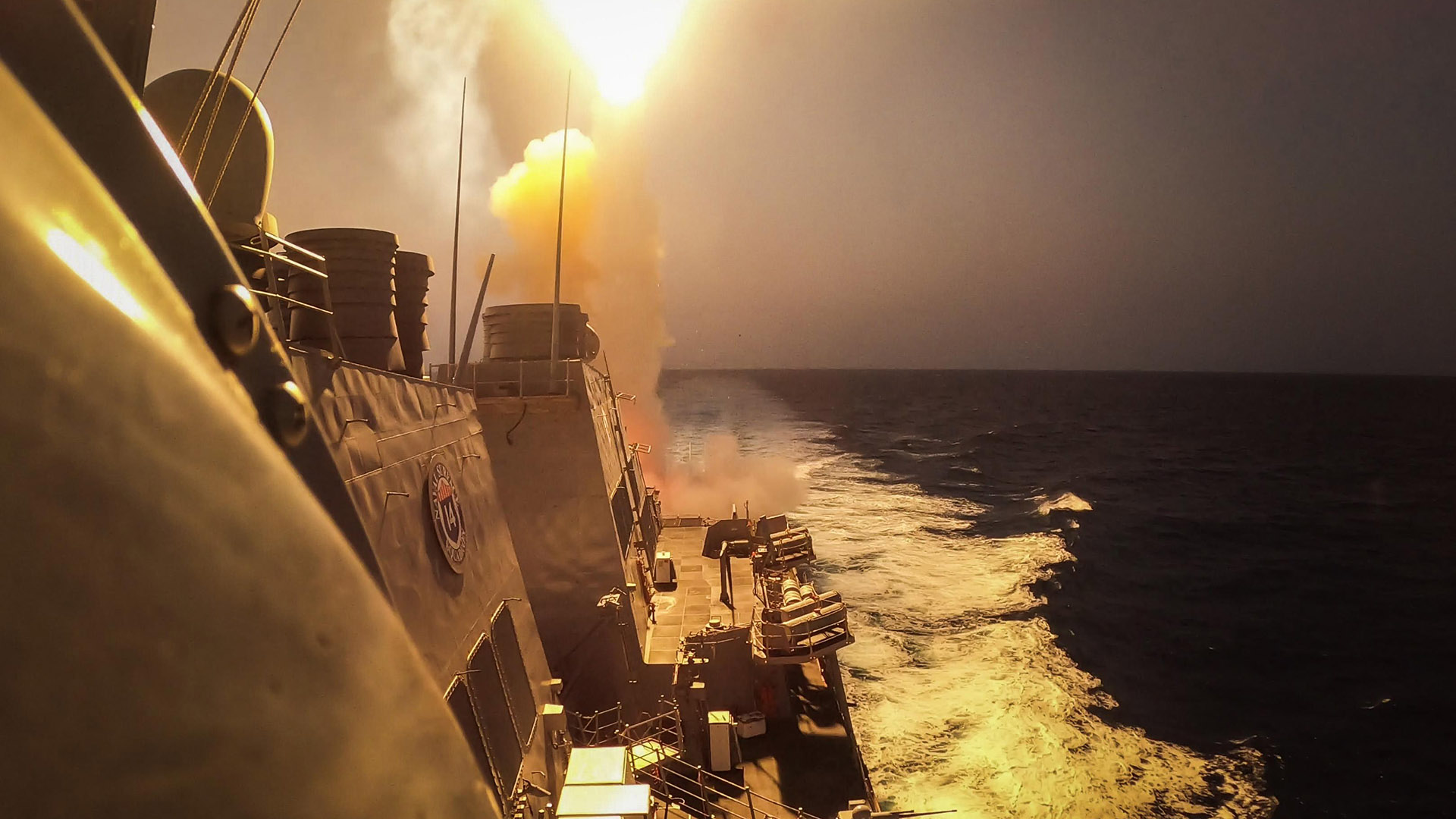

U.S. armed forces hit five targets in Yemen, taking out weapons used by the Houthi movement CENTCOM announced today. CENTCOM, as it has in past actions, called them “self-defense strikes” meant for protecting ships traveling through the Red Sea. The strikes targeted three mobile missile batteries carrying anti-ship munitions as well as two types of naval drones: an uncrewed underwater vessel and an uncrewed surface vessel.
Although the Houthis have several USVs and according to CENTCOM have been poised to launch them at commercial ships several times, this is the first instance of the group preparing an UUV since attacks on vessels started in October.
“CENTCOM identified the anti-ship cruise missiles, unmanned underwater vessel, and the unmanned surface vessel in Houthi-controlled areas of Yemen and determined they presented an imminent threat to U.S. Navy ships and merchant vessels in the region,” CENTCOM said in a statement posted to social media.
It’s unclear where in Yemen those strikes hit nor what military equipment was used to hit the targets.
Subscribe to Task & Purpose Today. Get the latest military news and culture in your inbox daily.
The strikes come after the Houthi movement claimed credit for an attack it said was on a British commercial vessel. The United Kingdom Maritime Trade Operations confirmed that a ship was attacked with a missile that exploded in close range, but all crew were reported safe. CENTCOM reported that the ship was the MT Pollux, a merchant ship owned by Denmark but registered in and flying under the Panamanian flag. On Tuesday Houthis fired a missile at a Greek ship carrying grain to Iran, the first attack on a commercial vessel in the Red Sea in almost a week. Since that lull in attacks ended, strikes on Yemen and missile launches from the country have resumed.
Although the Houthi movement’s forces have a pretty substantial and varied arsenal including drones, cruise missiles, armored vehicles and an F-5 Tiger fighter plane, this is the first time the group has been seen to have an uncrewed underwater vessel. By virtue of their very nature they are harder to detect once launched. Most of the Houthi attacks intercepted by American forces in the Red Sea and Gulf of Aden have been aerial in nature.
The Houthi movement controls a large portion of Yemen, including the major cities such as the capital of Sana’a. American and British have bombed Sana’a and other sites over the last two months.
Navies around the world including the United States have been expanding their maritime drone capabilities. The drones can and have been used for reconnaissance — and in the case of U.S. Navy drones, occasionally targeted for seizure — and are also capable of being used for offensive actions, as the United States is testing. Maritime drones such as USVs and UUVs are very effective; Ukraine successfully utilized them in coordinated attacks with aerial drones on Russian ships in the Black Sea, heavily damaging several vessels. The size and lack of crew made the small drones able to dodge Russian fire and reach their targets.
The latest on Task & Purpose
- Army officer gets reprimand for secret camera in dressing room
- Two Army Rangers made the bracelet Taylor Swift wore at AFC Championship game
- 5 Marines who died in CH-53E helicopter crash identified
- Police find rocket from nuclear missile in Washington home
- Army orders hundreds of counter-drone Coyote munitions amid attacks on US bases